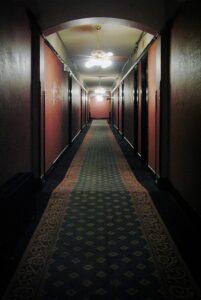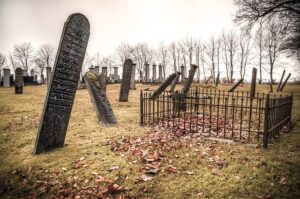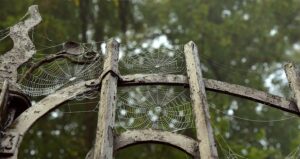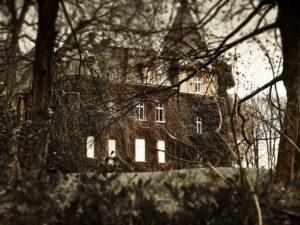 Lloyd Dobler ruined me. He wasn’t always the best at speaking his feelings, but that evening, he made them so clear. Standing outside his beloved’s home, he held the boombox high and played her a love song.
Lloyd Dobler ruined me. He wasn’t always the best at speaking his feelings, but that evening, he made them so clear. Standing outside his beloved’s home, he held the boombox high and played her a love song.
Lloyd is a character in the movie Say Anything. If you aren’t familiar, you can check out a clip here: https://youtu.be/S5Y8tFQ01OY
Lloyd’s heart is on his sleeve and blasting out of his boombox. Every boyfriend I’ve ever had has been measured on my secret Lloyd Dobler scale. What is the likelihood that this boyfriend would stand outside and play me a love song, unashamed to woo me?
Ghost Story is the book equivalent of Lloyd Dobler for me. I’ve measured far too many books against Ghost Story and many, perhaps most, have failed miserably.
I first read Ghost Story in middle school, around 6th or 7th grade. I liked long books in the horror genre, like The Stand by Stephen King and Baal by Robert McCammon. I wanted a long and well-woven story as a reader, even at that age.
Ghost Story blew my mind. It might have been the first book I’d read that was a story about stories or many stories within one overarching plotline. Reading it again, it still blows my mind, maybe even more so now that I’m trying to write stories myself.
Not only was there a masterful blending of stories, but there are passages and phrases that are absolutely beautiful to me. It was my first time really considering that there could still be lovely prose in a story that was meant to have tension or scares.
In my copy of Ghost Story, this dialogue takes place on pages 376 and 377:
“We were in a sort of sexless, pre-Freudian paradise,” Ricky finally said. “In an enchantment. Sometimes we even danced with her, but even holding her, watching her move, we never thought about sex. Not consciously. Not to admit. Well, paradise died in October, 1929, shortly after the stock market and Stringer Dedham.”
“Paradise died,” Sears echoed, “and we looked into the devil’s face.”
There is so much there to unpack! Memories of youth labeled as paradise read to me as idyllic, and I found myself immersed in a vision of what it must’ve been like and felt like to be dancing with Eva, spinning around, laughing and carefree. The turn of the scene with the phrase “paradise died” left me eager for what catastrophe must be next, artfully moving me from the dance floor into the “cyclone of hate” that unfolds on page 379.
Straub is a master of painting a mood for the reader and doing it quickly. On page 217, Don and Alma are staying at David’s vacation home.
Thus, there we are, mornings and afternoons in David’s house while the gray fog slides past the windows and the noise of waves slapping the beach far down suggests that any minute water will begin to come in through the bottom of the door.
For me, that short passage gives me the mood, dark and somber, as well as the distinct feeling that something bad or weird (or both) is about to happen.
Ghost Story is amazing. It is my literary Lloyd Dobler, a measure of a well done tale. Oh, you say you wrote a haunting novel? Well, how does it compare to Straub’s Ghost Story?



 The Exorcist as a movie was one of those films my parents didn’t want me to watch. There were never restrictions on what I could read, so that was always my loophole. Besides, my imagination is usually much scarier than what’s on the screen.
The Exorcist as a movie was one of those films my parents didn’t want me to watch. There were never restrictions on what I could read, so that was always my loophole. Besides, my imagination is usually much scarier than what’s on the screen.
 I am deliberately not researching the stories behind The Amityville Horror by Jay Anson. I am not going to research the DeFeo murders or the credibility of George and Kathy Lutz. I am sorely tempted to do some digging because the numerous financial concerns of George Lutz could certainly justify the creation of some elaborate haunted house story in order to skip town and maybe make some money off the tale.
I am deliberately not researching the stories behind The Amityville Horror by Jay Anson. I am not going to research the DeFeo murders or the credibility of George and Kathy Lutz. I am sorely tempted to do some digging because the numerous financial concerns of George Lutz could certainly justify the creation of some elaborate haunted house story in order to skip town and maybe make some money off the tale. I read Grave’s End perhaps ten years ago, picking up a copy from my local used bookstore’s paranormal section. I devoured the true story in a weekend, but then I forgot much of it.
I read Grave’s End perhaps ten years ago, picking up a copy from my local used bookstore’s paranormal section. I devoured the true story in a weekend, but then I forgot much of it.
 Lloyd Dobler ruined me. He wasn’t always the best at speaking his feelings, but that evening, he made them so clear. Standing outside his beloved’s home, he held the boombox high and played her a love song.
Lloyd Dobler ruined me. He wasn’t always the best at speaking his feelings, but that evening, he made them so clear. Standing outside his beloved’s home, he held the boombox high and played her a love song.